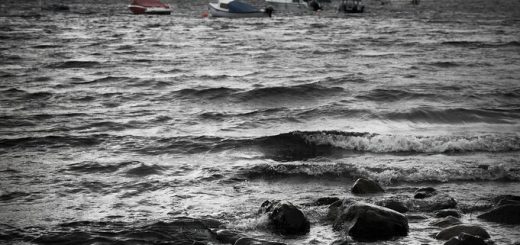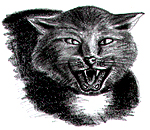Unbaptized Children
Stillborn babies and infants that had not been baptized could not always be buried on consecrated ground and a wealth of folklore developed around this delicate subject, some of it with a distinct North and South divide.
According to the Book of Oaths dated 1649, a midwife had to swear that ‘if any childe bee dead borne, you your selfe shall see it buried in such secret place as neither Hogg nor Dogg, nor any other Beast may come unto it, and in such sort done, as it may not be found or perceived, as much as you may; and that you shall not suffer any such childe to be cast into the Jaques (privy) or any other inconvenient place.’
A fairly common practice amongst the poor, in order to allow the child a burial on consecrated ground, was to hide it in the coffin or grave of somebody about to be buried. In Devon (taken from an 1852 account) it was apparently considered lucky to have the body of a stillborn or unbaptized child placed into a newly dug open grave as it guaranteed that the person finally laid to rest in that grave would go straight to heaven. In 1859 an undertaker was denounced in the Daily Telegraph as being ghoulish after being caught secreting a child in another persons grave.
Sometimes a Parish Minister may have allowed the child to be buried just within the walls of the churchyard, but without any funeral or memorial marker. The burial would also not be recorded, just as no record would exist of their baptism and this had an effect on national statistics as these children would officially not exist.
On 18th June 1860, The Morning Herald reported a case of attempted infanticide close to Liverpool. The mother of the child had got into the private grounds of gentleman and buried the child under sods of earth. The infant was found and the mother arrested and charged with attempted murder. She admitted to the crime and stated that she had succeeded in getting the child baptized as she believed that the child could not have died if it had not been. This belief that unbaptized children could not die was described as a ‘strange bit of folklore’ in Harland and Wilkinson’s 1867; Lancashire Folk-lore.
Another tradition perculiar to the North of England and the Border region is that if you stand on the grave of an unbaptized child (presumably one that could die), still born child or one that died from being overlaid, you would contract a fatal illness known as Grave-scab or Grave-merels
“Woe to the babie that ne’er saw the sun,
All alane and alane, oh!
His bodie shall lie in the kirk ‘neath the rain,
All alane and alane, oh!
“His grave must be dug at the foot o’ the wall,
All alane and alane, oh!
And the foot that treadeth his body upon
Shall have scab that will eat to the bane, oh!
“And it ne’er will be cured by doctor on earth,
Tho’ every one should tent him, oh!
He shall tremble and die like the elf-shot eye,
And return from whence he came, oh!”
The symptoms of Grave-scab include difficulty in breathing, trembling limbs and a burning sensation on the skin. The cure was described in Radford’s Encyclopaedia of Superstitions – A History of Superstition, though it is not something your local pharmacy could provide. The patient must wear a sack made from lint. This lint must have been grown in a field that had been fertilized by a farmyard heap that had not been touched for forty years. The sack then had to be taken to a mill dam owned by an honest miller and bleached by an honest bleacher before being sewn together by an honest tailor.
Ghosts associated with unbaptized children come in various shapes and sizes depending again upon the county in question. Most counties folklore have them appearing as Will-o-the-Wisps, in parts of Yorkshire they appear as nightjars and in Cornwall and Devon as Pixies. On the Isle of Man folklore suggests that an unbaptized baby would be tasked throughout eternity to carry a light within it’s hands (somewhat similar or Will-o-the-Wisp I assume). One tale described in Manx Folklore by William Cashen concerns fishermen who would hear a child crying each night on the shore. The child was that of an heiress of Eary Cushin who had fallen pregnant out of wedlock and disposed of the child so that she would not be shamed. Hence the child was not baptized. A fisherman called out to the crying child, asking why it cries each night. The child replied that it cries because it has no name. The fisherman replied that if it was a girl her name is Joney and if a boy John. Satisfied, the ghostly child was not heard again.
Sources:
• The Child and Childhood in Folk-Thought, Alexander F. Chamberlain
• Lancashire Folk-lore; Illustrative Of The Superstitious Beliefs And Practices, Local Customs And Usages Of Te People Of The County Palatine, John Harland & T Wilkinson 1867
• Encyclopaedia of Superstitions – A History of Superstition, M. Radford
• A Dictionary of English Floklore, Jacqueline Simpson & Steve Roud 2000
• William Cashen’s Manx Folk-lore, William Cashen 1912




Re: Unbaptized Children
‘If tha didn’t get kiddy baptised by t’parson, it would have to be put in a box and stuck in t’ground like some sort o’ animal … It wouldn’t be right like a proper babby, it would be just like burying a dog or a sheep’
This is a quote from a Gosforth man in the 1950’s. Doesn’t sound very Christian the way these children were treated.
Re: Unbaptized Children
I was told a piece of folklore by my grandfather up in Lincolnshire when I was a lad which is a little similar to the Manx tale told above. He said that unbaptised children took the form of small white moths which fly around at night looking for someone to give them a name. Apparently if one sees these moths one should utter one boys’ name and one girls’ name so that the spirit could finally rest in peace.